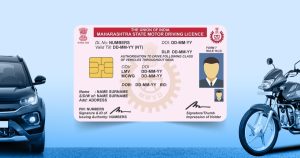More than 7 crore Indians are believed to be addicted to drugs. The most recent report that was presented in the Rajya Sabha shows ten suicides occur in a day in India due to drug abuse. In 2014, according to the National Crime Records Bureau, 3,647 suicide cases occurred due to drug abuse with states including Maharashtra, Tamil Nadu and Kerala recording the highest number of drug-related suicides. The government released data related to drug seizures which had increased by 455% between 2011 and 2013.
Some of the illegal drugs seized include cannabis, heroin, amphetamine, cocaine, hashish, ephedrine, heroin, methamphetamine, opium, morphine and methaqualone (mandrax) among others. Of these, ganja or cannabis, opium, brown sugar heroin and hashish are the most commonly used illicit drugs in India. More than 10 million people are estimated to be addicted to cannabis or ganja while heroin users are more than one million as per one estimate.
A majority of drug users are in the age group of 25 to 35 years which is the prime productive years in life. These years are also the make and break years as far as professions are concerned. Studies conducted in the state of Punjab found that 89% of drug addicts were educated and employed.
Ill effects of drug abuse
The annual healthcare expenses for dealing with consequences of drug abuse are as high as eleven billion dollars. Apart from the financial repercussions, drugs cause mental and physical health issues including:
- Insomnia
- Poor concentration and memory
- Violence or aggression
- Paranoia
- Suicidal tendencies
- Depression
- Brain and other organ damage
- Skin infections
- Weight loss
- Respiratory and digestive system disorders
How drug abuse is impacting the work atmosphere
Some of the risks at the workplace with drug abuse include a high risk of thefts, violence, drug pedalling, absenteeism, injuries and low morale of employees, all of which have a significant impact on productivity. Studies show that employees who are addicted to drugs:
· are late for work at least thrice as many times as others
· avail sick leave thrice as much as others
· have a fourfold increased risk of workplace accidents
One out of five employees who are non-addicts, state they had to cover for the employee who was an addict or that they have been injured because of the co-worker’s addiction. Substance abuse has also been known to be the major cause of violence at the workplace.
Corrective action: Drug abuse tests and counselling
Employers need to be aware of the legislation related to drug misuse and illegal possession at the workplace. According to the Narcotic Drugs & Psychotropic Substances Act, the possession, consumption and sale of any type and amount of illicit drugs are punishable. The punishment can vary depending on the seriousness or extent of the crime. First-time offenders may not attract punishment. For these, counselling and rehabilitation services can help address the problem.
A workplace policy should be developed with regard to drug testing, background verification and criminal history prior to employment and during employment. Random drug abuse tests can reveal any previously unknown drug abuse among employees.
The drug testing protocols can relate to:
- Pre-employment drug abuse test
- Reasonable suspicion-based drug abuse test
- Follow up drug abuse testing for confirmation or post rehabilitation
- Routine test for fitness
- Random substance abuse test
- Disciplinary consequences for repeat offenders post drug abuse test
Several drug testing panels are available in standard formats ranging from five to thirteen-panel drug testing with the number correlating with the number of drugs being tested. Of these, the five-panel drug testing is more commonly used.
Also Read: Drug Abuse Tests: A Beginner’s Guide to What & How?






